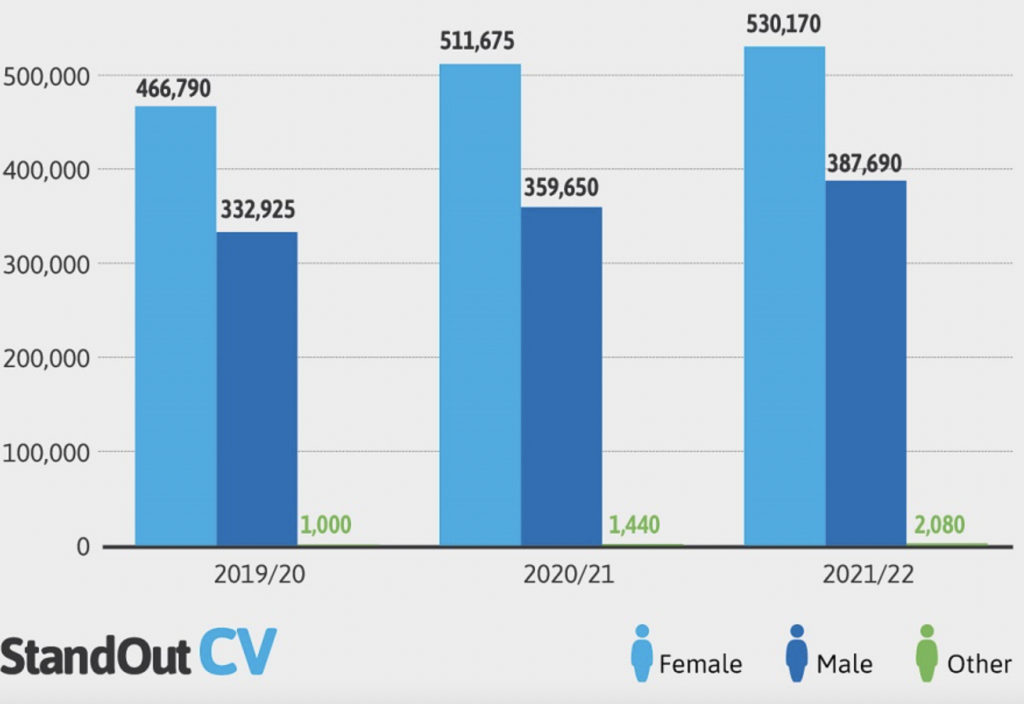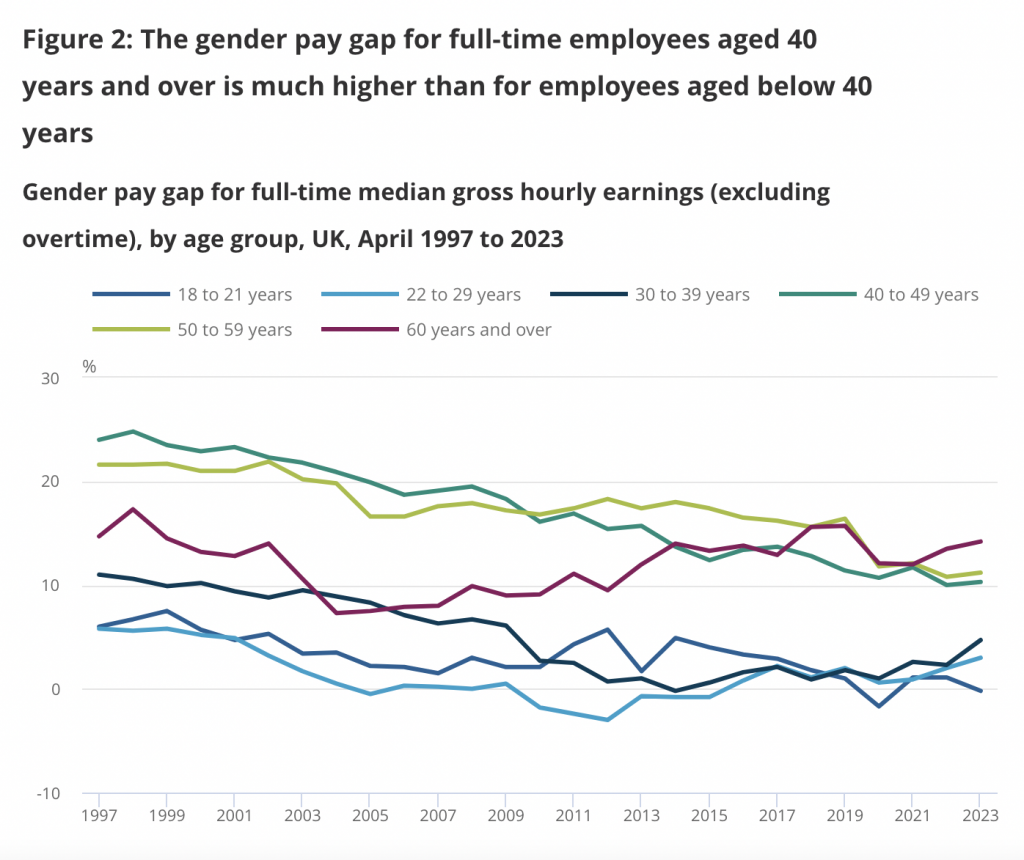GPG ‘decrease’ – but how slow, and age remains crucial
The ONS has produced its latest stats on the gender pay gap – and they don’t make pretty reading. For readers not already aware there is a big difference between the ‘headline’ figure, which refers only to full-time employees, and the overall figure which includes part-timers. The fact that the former is treated as the ‘main’ figure is significant: it both reflects, and itself confirms, the lower status of part-timers. The GPG is almost twice as high for ‘all employees’ as it is for full-timers.
In any case, there was no progress last year. As the ONS puts it:
In 2023, the gap among full-time employees increased to 7.7%, up from 7.6% in 2022. This is still below the gap of 9.0% before the coronavirus (COVID-19) pandemic in 2019. Among all employees, the gender pay gap decreased to 14.3% in 2023, from 14.4% in 2022.
Let’s make the basic Paula Principle contrast: between the male/female pay/careers gap, which is closing only slowly if all; and the female/male competence gap, which continues to increase. So here are recent graduation rates:

But as before I want to emphasise the need for a full career perspective. The gap grows very markedly with age:
for the age group for those aged 40 to 49 years and older, the gender pay gap for full-time employees is much higher, at 10.3% or higher. The gender pay gap increased across all age groups between 2022 and 2023, except for those aged 18 to 21 years where it decreased from 1.1% to negative 0.2%. The largest increase was seen among employees aged 30 to 39 years, where the gender pay gap increased from 2.3% to 4.7%. This is the highest value of the gender pay gap for this age group since 2009.

The female/male competence gap is smaller for the older age groups, but the male/female career gap is so very evident.
